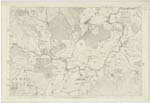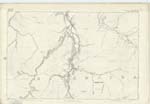OS1/1/47/102
| List of names as written | Various modes of spelling | Authorities for spelling | Situation | Description remarks |
|---|---|---|---|---|
| KILDRUMMY CASTLE (In Ruins) | Kildrummy Castle (Ruins of) Kildrummy Castle (Ruins of) Kildrummy Castle (Ruins of) Kildrummy Castle (Ruins of) |
Statistical Account 1843 Collections of the Shires Aberdeen & Banff 1843 L. Duncan's Plan & Pamphlet. Revd. [Reverend] John Christie. The Manse. |
061 | [Continued from page 101] No.2 Continued Kildrummy Castle (Ruins of) This is now fallen, and stops going in far, but some of the old inhabitants pretend to have in their time entered here, and gone through under the castle, south, till they turned east again, and went so far on, that for fear and want of air, they could venture no further. It is certain there are in this parish several openings to such vaults which the country people call Pict Houses, on the north side of the close is the remains of a most glorious hall, in form of an oblong square, more than sixty feet in length, and about forty broad, with large arched windows, this is called Barnet's Hall. On the northeast side is the ruin of a church, and a church-yard where human bones have been frequently digged up. To the east is The Black Lardner, which was burnt by Edward Carnarvon. It was burned again by the English in Cromwell's time; and the new house on the south side built by the Lords of Elphinstone, when they were possessed of Kildrummy, was burnt by the Highlanders at the revolution. Upon the north side is a den, with a current running through the middle of it called The Back Den." vide collection of the Shires of Aberdeen & Banff 1843. Page 589 , &c. "Numerous dates and founders have been assigned to Kildrummy Castle; but, as these accounts rest on no good authority, it may safely be asserted that nothing is known about its origin. It has been matter of dispute whither the first edifice on this spot was of a military or a religious character. Be this as it may, there is no doubt that the place takes it name from the natural configuration of the ground. Kildrummy (as it is called in Gaelic) signifying the "top of the hill or rising ground," and the common form of the word the "Cell or Chapel on the rising ground." The Great Keep or "Snow Tower", is undoubtedly the oldest part of which any vestige is now to be seen, and it is at least as ancient as the days of William the Lion, whose brother, the renowned David, of Huntingdon and Garrioch, is known to have resided here. It is very probable that he was the first founder - See No. 3. [Continued on page 103] |
Continued entries/extra info
[Page] 102Parish of Kildrummy
Transcribers who have contributed to this page.
CorrieBuidhe- Moderator, LBruce
Location information for this page.





